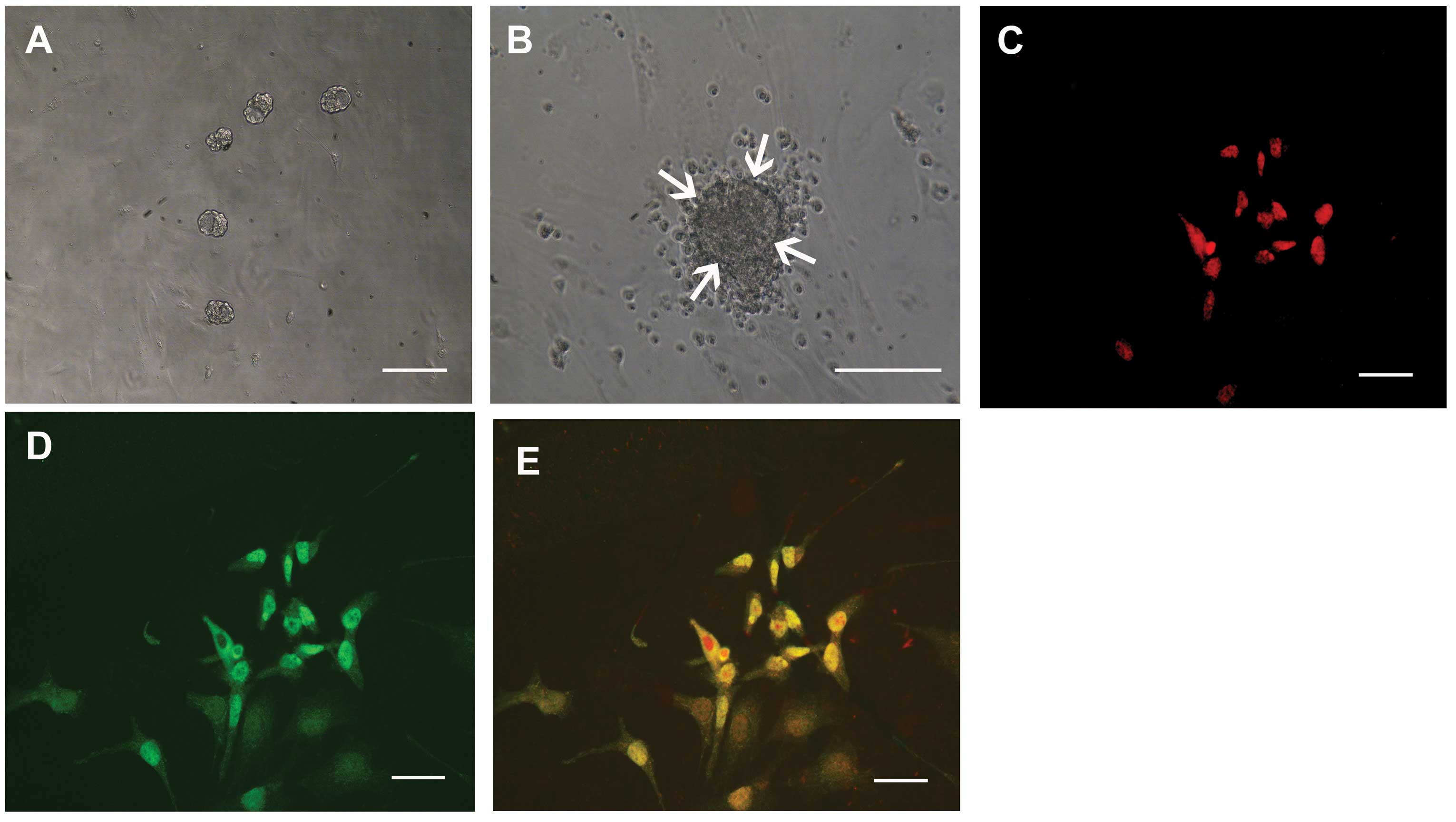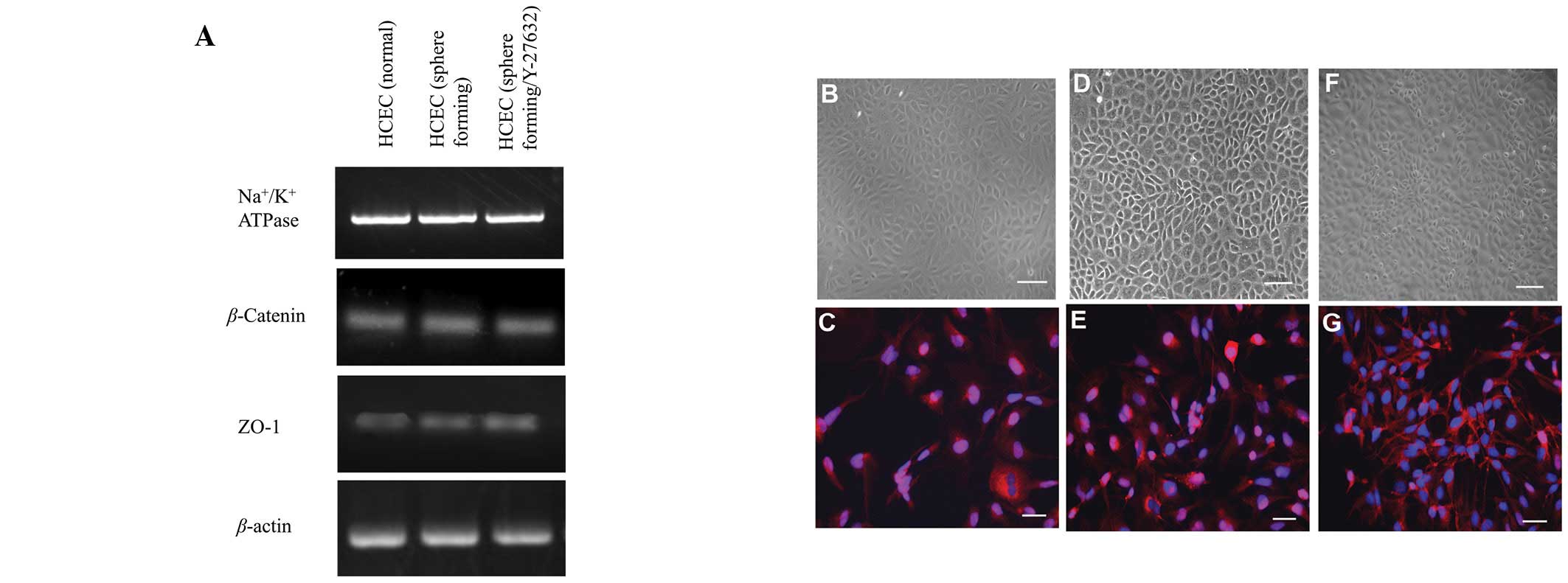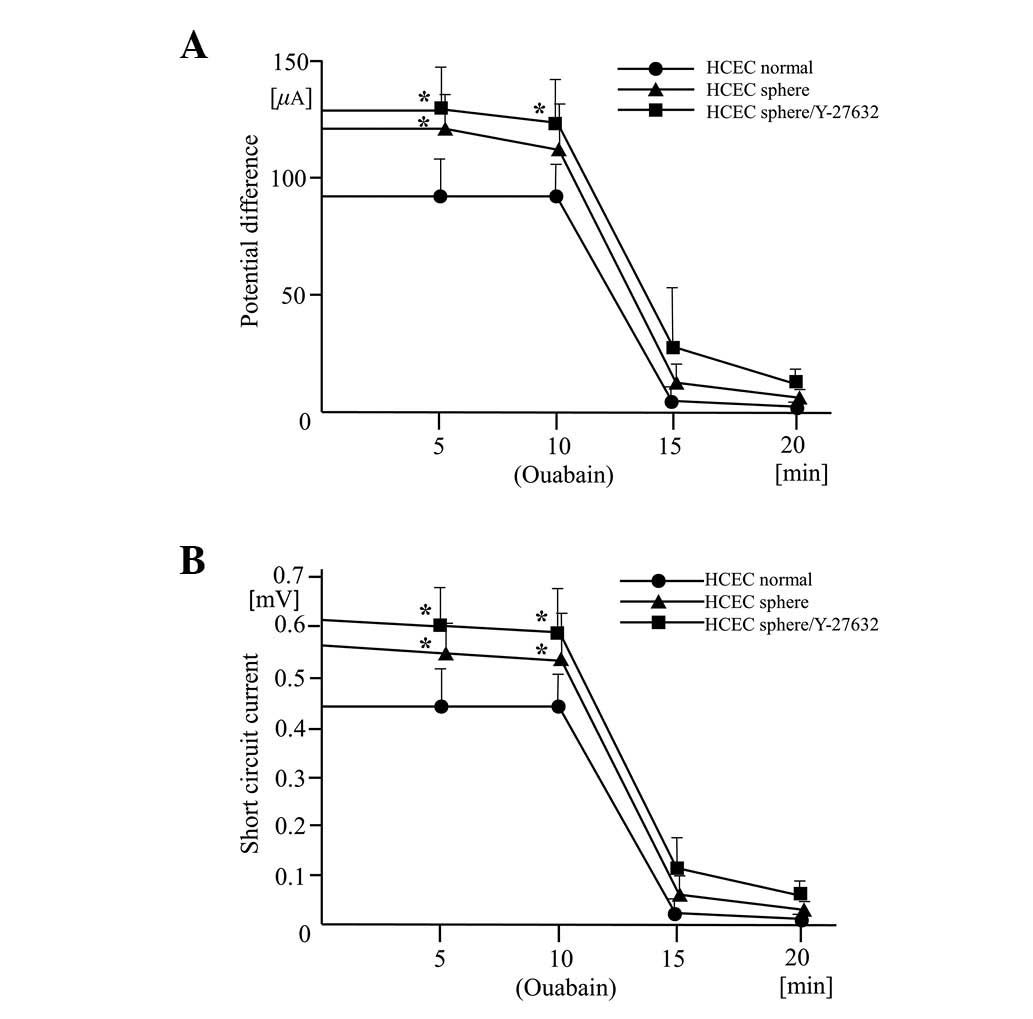Regulation of functional corneal endothelial cells isolated from sphere colonies by Rho-associated protein kinase inhibitor
- Authors:
- Published online on: November 19, 2012 https://doi.org/10.3892/etm.2012.816
- Pages: 433-437
Metrics: Total
Views: 0 (Spandidos Publications: | PMC Statistics: )
Total PDF Downloads: 0 (Spandidos Publications: | PMC Statistics: )
Abstract
Human corneal endothelial cells (HCECs) form a monolayer covering the inner side of the cornea. Since HCECs have lower mitotic activity after birth, damage or disease of HCECs will lead to failure of cellular pump functions and inevitably to corneal stroma oedema and loss of vision. Ex vivo cultured HCEC transplantation is the most promising therapy used to avoid donor tissue shortages. However, proliferation of functional adult HCECs is difficult to achieve using standard cell culture techniques. In this study, we isolated sphere colonies from HCECs, which were characterised as HCEC precursor cells. HCECs from these spheres were incubated with the Rho-associated protein kinase (ROCK) inhibitor Y-27632 (30 µM for 1 h at 37˚C) to observe cell pump functions and the levels of several cell markers. Cells from the spheres were immunostained positive for nestin (a marker of immature cells) and for an immature neuronal marker (β3-tubulin). There were no significant differences in the expression of genes associated with cell adhesion or ion transport channels, between the cells with or without Y-27632. However, immunostaining revealed a higher density of Na+/K+-ATPase in cell nuclei from HCECs (sphere-forming) and HCECs (sphere-forming/Y-27632) than normal HCECs. There was a higher resting potential difference and resting short circuit in the HCEC (sphere-forming) and HCEC (sphere-forming/Y-27632) cell lines, compared with normal HCECs. In this study, we successfully cultured functional HCEC cell lines, which possessed several important characteristics required to maintain the transparency and refractive parameters of the human cornea. These included hexagonal cell morphology, higher cell adhesion and proliferation ability, HCEC pump function and positive expression of several cell adhesion markers.













